Be-Ro gingerbread recipe: Good British baking
I don't have a huge collection of cookbooks, but among my prize possessions are three editions of the Be-Ro Home Recipes book. It's a slim little volume, published by a flour company founded in the north of England in the 1920s. My oldest volume is from 1957; my newest, the fortieth edition, is from 2007.
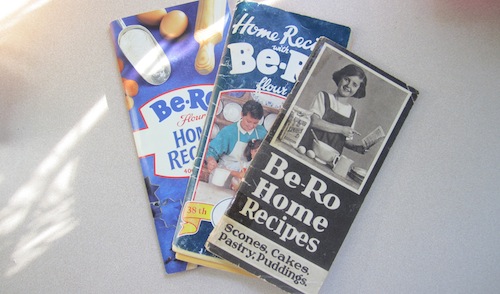
I like them because they're a link to my childhood, and to weekends spent baking butterfly cakes and drop scones with my mom.
And they're a way to chart changes in British baking: there's no quiche or pizza in the '57 book, though there is something called milk bread (1lb plain flour, 1 tsp salt, half a pint of milk, mixed well and baked for an hour at 375-425 degrees — how's that for an exact science?).
The '57 has exactly two recipes that call for chocolate, while the '07 has 15. Simpler cakes like walnut and cherry are still with us, but now stand alongside coconut-lime loaf and peach-butterscotch pudding (um, eww?).
Some things are constant, though: Victoria sponge, Welsh griddle cakes (amazingly on page 9 of all three editions), Swiss roll.
And all three have a type of gingerbread, which is what I was hankering for today. I wanted to go with the '57 recipe, but wasn't sure about measurement; how much milk is in a teacupful?
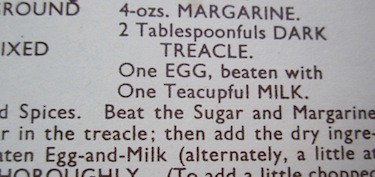
Instead, I went with the most recent edition's gingerbread recipe.
English baking recipes measure by weight instead of volume, so a kitchen scale is a good thing. As this gingerbread is so good, I decided to convert the measurements so I could share it with y'all.
Warning: This gingerbread contains a lot of sugary, buttery goodness. If your name rhymes with Taller Green, do not attempt.
Start by heating the oven to 300 degrees, and grease an 8" square pan (unless, like me, you use silicone. What did I do before silicone??)
Two cups flour
A pinch of salt
Two teaspoons of ground ginger (or three if you want it super-gingery)
One teaspoon of allspice
One teaspoon of baking soda
Half a cup of light brown sugar
Half a cup of molasses
A quarter cup of golden syrup (treacle)
One! Stick! Of butter!
Half a cup of milk
Two eggs, beaten
What is golden syrup, you ask? It's like molasses's blonder brother; in Britain it's used in baking, and you can also spread it on toast like super-sweet honey. You can find it at Amazon; one can goes a long way.
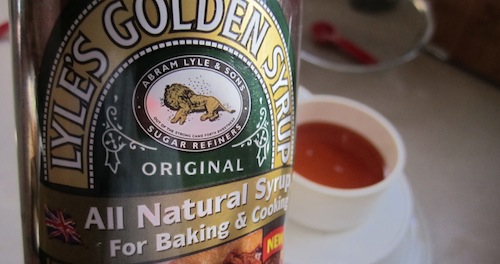
Sift the flour into a big mixing bowl and add the rest of the dry ingredients.
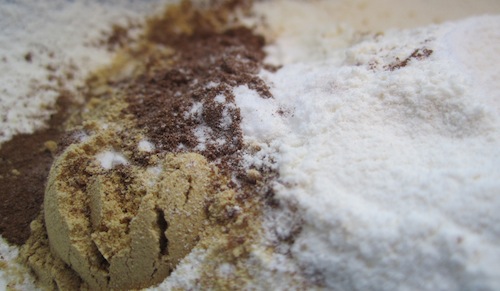
In a small saucepan, combine the molasses, treacle and butter. Heat it slowly while the butter melts, but don't let it bubble.
Important note: This part smells uhhh-mazing. Be sure not to miss the chance to inhale deeply over the pan. It's like hot buttered rum without the booze.

Once the butter has melted, take the pan off the heat and add the milk. Then let it cool completely before adding the eggs (so you don't cook them) and stirring everything together.
Pour the wet ingredients onto the dry and mix well. The batter will be quite runny. Pour it into the baking pan (or rubber square, if you will).
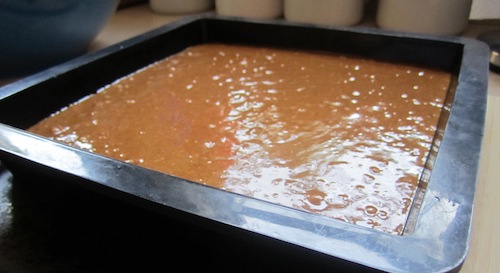
Bake for an hour, or until a knife comes out clean.
Let it cool in the pan until you can't bear to wait any more. Slice it into generous squares while it's still slightly warm. You might need a fork, as it's sticky. This is good.
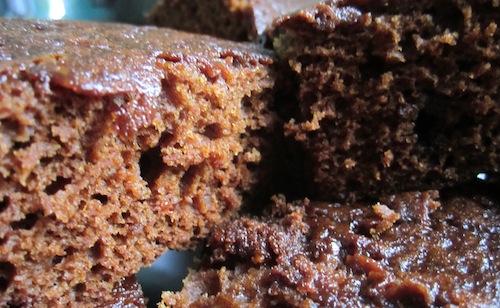
From reading other recipes containing treacle, my guess is that this will improve with age. My other guess is that this won't be around long enough for us to find out.
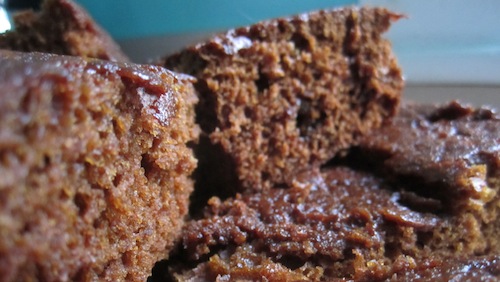

I like them because they're a link to my childhood, and to weekends spent baking butterfly cakes and drop scones with my mom.
And they're a way to chart changes in British baking: there's no quiche or pizza in the '57 book, though there is something called milk bread (1lb plain flour, 1 tsp salt, half a pint of milk, mixed well and baked for an hour at 375-425 degrees — how's that for an exact science?).
The '57 has exactly two recipes that call for chocolate, while the '07 has 15. Simpler cakes like walnut and cherry are still with us, but now stand alongside coconut-lime loaf and peach-butterscotch pudding (um, eww?).
Some things are constant, though: Victoria sponge, Welsh griddle cakes (amazingly on page 9 of all three editions), Swiss roll.
And all three have a type of gingerbread, which is what I was hankering for today. I wanted to go with the '57 recipe, but wasn't sure about measurement; how much milk is in a teacupful?

Instead, I went with the most recent edition's gingerbread recipe.
English baking recipes measure by weight instead of volume, so a kitchen scale is a good thing. As this gingerbread is so good, I decided to convert the measurements so I could share it with y'all.
Warning: This gingerbread contains a lot of sugary, buttery goodness. If your name rhymes with Taller Green, do not attempt.
Start by heating the oven to 300 degrees, and grease an 8" square pan (unless, like me, you use silicone. What did I do before silicone??)
Two cups flour
A pinch of salt
Two teaspoons of ground ginger (or three if you want it super-gingery)
One teaspoon of allspice
One teaspoon of baking soda
Half a cup of light brown sugar
Half a cup of molasses
A quarter cup of golden syrup (treacle)
One! Stick! Of butter!
Half a cup of milk
Two eggs, beaten
What is golden syrup, you ask? It's like molasses's blonder brother; in Britain it's used in baking, and you can also spread it on toast like super-sweet honey. You can find it at Amazon; one can goes a long way.

Sift the flour into a big mixing bowl and add the rest of the dry ingredients.

In a small saucepan, combine the molasses, treacle and butter. Heat it slowly while the butter melts, but don't let it bubble.
Important note: This part smells uhhh-mazing. Be sure not to miss the chance to inhale deeply over the pan. It's like hot buttered rum without the booze.

Once the butter has melted, take the pan off the heat and add the milk. Then let it cool completely before adding the eggs (so you don't cook them) and stirring everything together.
Pour the wet ingredients onto the dry and mix well. The batter will be quite runny. Pour it into the baking pan (or rubber square, if you will).

Bake for an hour, or until a knife comes out clean.
Let it cool in the pan until you can't bear to wait any more. Slice it into generous squares while it's still slightly warm. You might need a fork, as it's sticky. This is good.

From reading other recipes containing treacle, my guess is that this will improve with age. My other guess is that this won't be around long enough for us to find out.

Labels: baking, bero, british food, cake, food, gingerbread
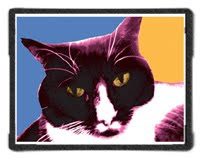


3 Comments:
I'm sure my mam has still got her Be-Ro cook book. I should scan it an mail it to you if she has xx
the result looks super tasty, so I bet it is :) have to try it this weekend :)
All that food is sure making me hungry. They all look really tasty.
Post a Comment
Subscribe to Post Comments [Atom]
<< Home